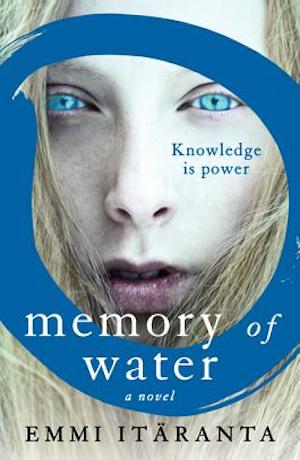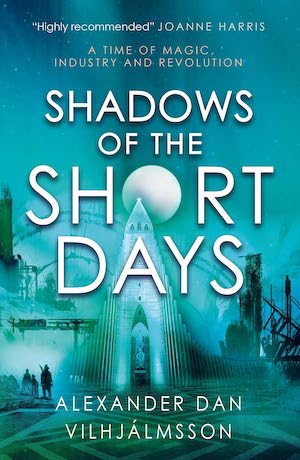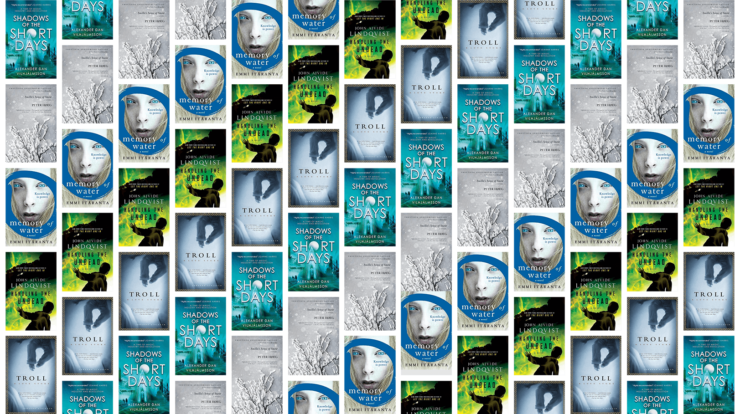In the world of English-language books, the Nordic countries have a solid reputation for providing us with a steady stream of crime fiction (under the apt descriptor of “Nordic noir”) and children’s literature, including classics like Pippi Longstocking and the Moomins.
Fantasy, science fiction, supernatural horror, and other speculative fiction by Nordic authors haven’t hit the mainstream in quite the same way—but this is also true in the Nordic homelands of Denmark, Finland, Iceland, Norway, and Sweden themselves. Despite all the fairy tales, folklore, and Norse/Finnish mythology abounding in these nations, the Nordic speculative fiction novel just hasn’t enjoyed the same robust tradition as its counterpart in native English.
But that’s been steadily changing. Nordic speculative fiction still isn’t being written or released at the same rate as Nordic noir, but there’s a growing scene. Nordic speculative fiction authors are often strikingly original—rather than bandwagoning onto a popular, prevailing theme or familiar premise with a slight twist or added extravagance, these writers frequently totally subvert or eschew expectations entirely. English-language translations aren’t hugely commonplace, and the novels that have found their way to the US, UK, and beyond most often tend to be set in our own world (typically in the author’s own Nordic homeland) rather than in alternate worlds. So this list doesn’t feature any examples of high fantasy or space opera, but if you’re a reader who enjoys monsters, alternate realities, magic realism, or dystopia, then one of these titles may be for you.
Smilla’s Sense of Snow by Peter Høeg

(Translated by Tiina Nunnally) A winner of multiple mystery novel awards when it was released, Smilla’s Sense of Snow is the least obvious book on this list and also the oldest, having first been published in Denmark in 1992. Despite the fact that it’s generally labeled as a mystery, Smilla’s Sense of Snow is more akin to a Michael Crichton-style sci-fi thriller heavily wrapped up in the trappings of Nordic noir.
The plot follows the actions of Smilla, a Greenlandic woman living in Denmark, who begins to investigate the mysterious death of young boy in her neighborhood. The deeper she digs, the stranger and more sinister things become as the setting gradually shifts from urban Copenhagen to the desolate, icy coast of Greenland. The narrative voice is hugely entertaining, provided you enjoy an abundance of highly cynical witticisms interspersed throughout the text, and while the speculative element is only revealed towards the very end, it remains the clear motivational force for all of the book’s main events. Smilla’s Sense of Snow was adapted into a movie in 1997 starring Julia Ormond and Gabriel Byrne. (Note: released in the UK as Miss Smilla’s Feeling for Snow)
Memory of Water by Emmi Itäranta

(Translated by the author.) Set in a drought-ravaged distant (yet easy to envision) future, Memory of Water takes place in former Finnish territory that has come under the foreign rule of a draconian, new empire based in what is now China. The book focuses on the teenage protagonist, Noria, and her family of traditional tea masters—who by decree enjoy a more generous rationing of water than most citizens—in a secluded village near Kuusamo at the moment when a new military commander with a serious chip on his shoulder arrives in town.
Adding to the tension and suspense is the side-plot that occurs predominately in the second half of the book involving Noria and her best friend’s discovery of…something that shouldn’t be commented upon further for anyone who might want to read it. Full of lush prose about the tangible and ephemeral qualities of water, Memory of Water is more drama than action or thriller; it’s a very somber novel, but also very memorable. A film adaptation of the book premiered in Finland in 2022.
Handling the Undead by John Ajvide Lindqvist

(Translated by Ebba Segerberg.) A highly original twist on the zombie theme, Handling the Dead presents readers with the notion that the undead aren’t really evil, slavering fiends, but just sad, somewhat dim-witted people who simply want to go home upon awakening—it’s the living who are scary. The story follows three separate pairs of individuals in Stockholm who are confronted with the mysterious reanimation of a recently deceased loved one, and how each of these pairs independently handles the situation on a personal level while society at large spirals out of control around them. Also, there’s rabbit telepathy. The book is the second offering by Lindqvist, who is best known as the author of Let the Right One In (adapted in some versions as Let Me In). A new feature length film based on Handling the Undead was just released in February of 2024 in Norway.
Troll: A Love Story by Johanna Sinisalo

(Translated by Herbert Lomas.) A charming but twisted little book that posits the notion that trolls are very real—and have been scientifically studied and classified as the incredibly rare species, Felipithecus trollius. Among regular interludes comprised of invented documentation about trolls as well as text from actual volumes of folklore, the plot follows the trials and tribulations of the main character, Angel, as he struggles to house-train and raise an abandoned baby troll that he happened to find by chance one day. Taking place in the interior Finnish city of Tampere, the journey is a bizarre ride through Angel’s private and personal world of ex-boyfriends, friends and lovers, and an abused mail-order bride that steadily builds up a thickening atmosphere of obsession, paranoia, and darkness. (Note: released in the UK as Not Before Sundown)
Shadows of the Short Days by Alexander Dan Vilhjálmsson

(Translated by the author.) Set in a present-day, alternate-reality version of Reykjavik, Shadows of the Short Days has the feel of a steampunk novel in terms of its attitude and general aesthetics, but built on concepts related to Old Norse sorcery rather than the technology of Victorian England. Many of the Icelandic locales referenced in the book actually exist, though not necessarily with the same functions or purposes as in real life—the city’s iconic, hilltop hot water tank construction known as Perlan is presented as a thaumaturgical power plant, for example. The story follows two main characters on separate paths that sometimes intersect as they struggle to achieve their goals: Sæmundur’s is to become the greatest practitioner of galdr (a specific form of Viking Age sorcery) the world has ever seen, and Garún’s is to overthrow the oppressive regime of the Kalmar Commonwealth (inspired by the actual Kalmar Union of the Middle Ages).
The book is a wild ride and should appeal to anyone who might like the idea of magical human skulls that operate as music/audio devices, highly restrictive schools of dark Norse sorcery, tribal human-bird warrior clans, exiled huldufólk (Icelandic fairy people) who feast on human memories, hostile scorn pole-based magical attacks, and clumsy golems made from unwashed laundry.










